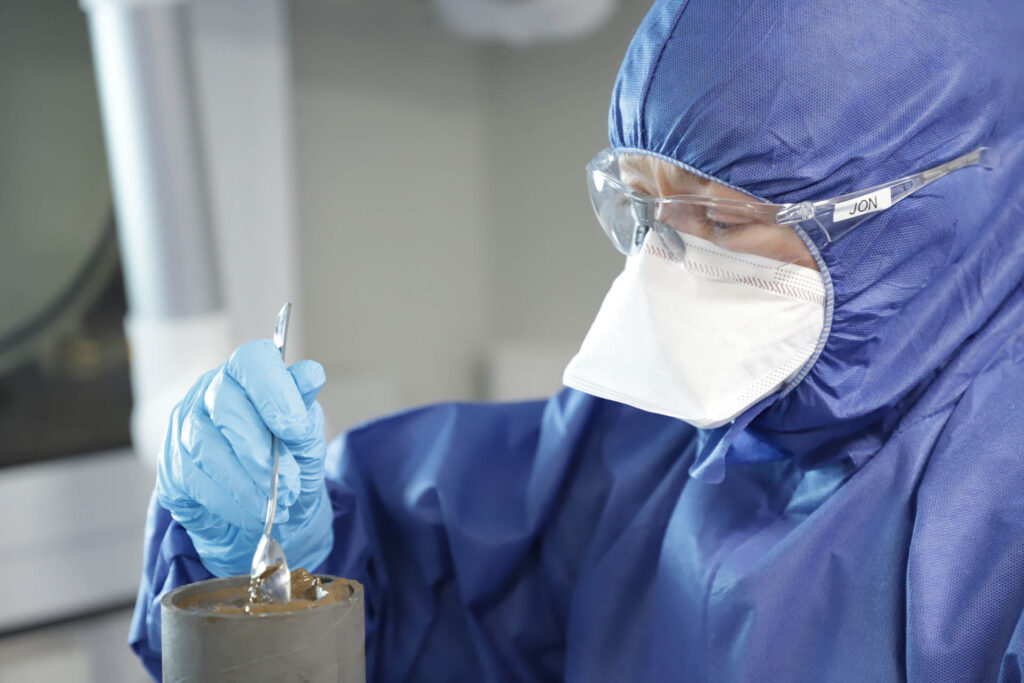The expedition came to a successful conclusion despite an incident a few days in that forced the ship to go to Tromsø for repairs.

A long search
Research vessel Kronprins Haakon spent nine days scouring the Lena Trough with a remotely operated vehicle (ROV) for signs of hydrothermal activity. The ROV found many such signs: minerals produced by hydrothermal activity, fauna commonly associated with these areas, and hot water coming out of the sea floor.

At first, the springs (geologists call them “vents”) found by the ROV were of the shimmering kind; these spew out crystal-clear water, which makes them visible on video because they cause a shimmer in the water, but almost impossible to see on still images. The holy grail of hydrothermal activity, though, is the black smoker: these vents spew out hot water (sometimes as hot as 400°C) turned black by chemical interactions with underground rocks.
Hydrothermal vents are often associated with tall, chimney-like structures created by the outflow of chemically laden water. Scientists found several inactive chimneys during their search. Late at night, on what was slated to be the ROV’s very last dive of the expedition, they found one that was very much active and estimated to be as much as 10 metres tall.




Building on previous results
It was known that there was hydrothermal activity in this particular area (called Lucky Ridge) since 2004. That’s when German research vessel Polarstern dredged up some rocks rich in sulphides, which suggests that they were hydrothermal mineral deposits. They also registered temperature anomalies in the water column; another sign that hot water is coming up from the sea floor somewhere in the area.
Lucky Ridge is a 1600-metre-tall subsea mountain (the same height as Trollveggen), sitting in a 4000-metre-deep valley. GoNorth explored it extensively over the past days. Scientists not only found several active sites but created a detailed seafloor map of the area with the ROV. In total, over 100 samples have been collected (80 in the Lucky Ridge area), and their analysis over the coming months will shed even more light on the geological characteristics of the new vent field.

“At first glance, this seems like a very special field,” says expedition leader Rolf Birger Pedersen. “It has many traits that differentiate it from similar areas other places around the world.”
These differences will no doubt be explained as the scientists carry out their analyses over the coming months. Rolf Birger Pedersen expects the area to get a lot of attention, moving forward.
“Lucky Ridge is composed of mantel rock that are normally covered by the crust. Reactions between the mantel minerals and seawater leads to the release of hydrogen, which is a source of energy for certain types of microorganisms. These microorganisms are in turn a source of food for other, bigger creatures. The areas mapped by GoNorth can become a living laboratory for the study of this interplay between life, water and minerals.”


Watch the GoNorth 2023 video
Damaged instrumentation
On 10 July, just three days after setting out from Longyearbyen, the expedition was hit by an unfortunate incident. A steel rod holding a crucial positioning device underneath the hull of the ship was bent when it was hit by sea ice. Kronprins Haakon had to go to Tromsø for repairs, at reduced speed, which amputated the research time by several days.
The repairs were carried out quickly thanks to the good work of the ship’s crew, with support from Maritim Sveiseservice for crane operations, Fagdykk for the diving operation needed to remove the bent steel rod, and Kongsberg Support for rapidly sending a spare part to Tromsø.
Heavy sea ice
Unusually heavy ice conditions – when compared to recent years at least – meant that the ship was unable to reach the Nansen and Amundsen Basins, where some research activities were planned. Even German research vessel Polarstern, a heavier, more powerful icebreaker than Kronprins Haakon, struggled in these conditions. This is how the expedition came to spend more time than initially planned in the Lena Trough.
Collaboration with Polarstern
Even though sea ice dictated where the ships could be, the planned collaboration between Norwegian vessel Kronprins Haakon and German vessel Polarstern was carried out. The ROV picked up an ocean-bottom seismometer that Polarstern had not managed to release from the sea floor. Polarstern in turn provided coordinates to interesting areas in both the Aurora vent field (where the ships met) and in the Lucky Ridge area.

A multidisciplinary expedition
GoNorth’s objective is to push the boundaries of knowledge about Norway’s neighbourhood in the Arctic Ocean, from the sea floor and subsea geology to the sea ice, via the water column. As such, a diverse group of scientists with various areas of expertise have participated in the expedition.






Next up: Morris Jesup Rise
GoNorth’s third expedition is slated to start in September of 2024, with the goal being Morris Jesup Rise, an underwater projection of the Northern Greenland shelf into the Arctic Ocean.
GoNorth on Dagsrevyen
GoNorth was featured on NRK evening news show Dagsrevyen, on 18 August. You can watch the segment (in Norwegian) here: Unike havbilder










Comments
Would Greenland be able to develop the hydrothermal feature to melt ice to increase their drinking water supply and for district heating?